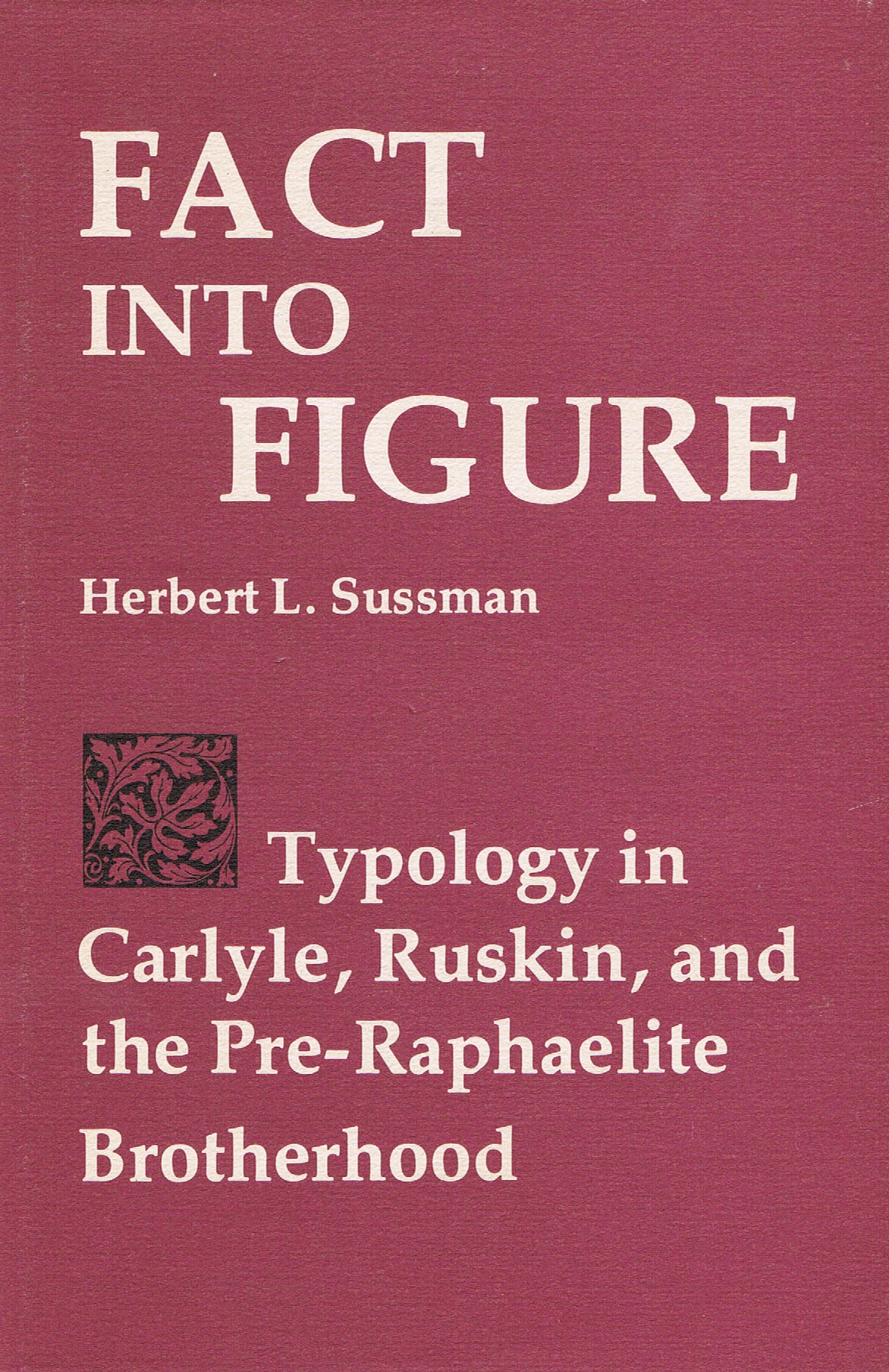Fact Into FigureTypology in Carlyle, Ruskin, and the Pre-Raphaelite BrotherhoodHerbert L. Sussman |
 1979 Literary Criticism / European / English, Irish, Scottish, Welsh 158 pp. 6x9  $19.95 paper 978-0-8142-5356-4 Add paper to shopping cart Shopping Cart Instructions Review/Change Shopping Cart & Check-out |
|||
|
Much in the history of the Pre-Raphaelite Brotherhood, between its founding in 1848 and its dissolution in 1853, is rather droll. Thoughts of Elizabeth Siddal shivering in a tub of cold water while posing as the drowning Ophelia, and of an equally uncomfortable Holman Hunt, his feet wrapped in straw against the frigid night as he waited to paint just the right shade of moonlight on a wall, strike the modern mind as so curious that commentators have often found it difficult to move beyond such anecdotes to serious consideration of the principles that inspired the group. Contemporary criticism has tended to regard the Pre-Raphaelites merely as failed modernists. By placing the Brotherhood securely within its Victorian setting, however, Professor Sussman discovers it working within a distinctly nineteenth-century mode of typology or figuralism practiced by Thomas Carlyle and John Ruskin, who in the 1840s articulted an aesthetic that, by fusing the tradition of typological Bible-reading with the new modes of experimental science and scientific history, found in the detailed, accurate representation of natural and historical fact the means to translate fact into figure, into the very embodiment of transcendental, divine meaning. When examined in light of this connection and coherence, the Brotherhood emerges as a band of serious artists who engaged the crucial artistic and cultural questions of their age. Dr. Sussman sees them as occupying a point of transition between the sacramental and the secular artist, and as perhaps among the last artists in the Western tradition who, through living in a secular age, sought to imbue the facts of history and contemporary life with sacred meaning through creation, in the modernist fashion, of a new iconography to replace a shared but exhausted cultural tradition. By rejecting the biographical approach that has characterized previous studies of the Brotherhood in order to treat as a unified whole the art and poetry it produced, Dr. Sussman is able to demonstrate conclusively that the work of Holman Hunt, John Millais, and Dante Gabriel Rossetti, during the brief period of the group’s existence, possesses a self-conscious coherence that draws upon this Victorian figuralism. His consideration of their treatment of Scripture, of postbiblical history, and of imaginative literature clearly indicates that, very much like Carlyle and Ruskin, they used their distinctive particularized and historicist style to enforce the typological quality of Scripture, to impart sacramental meaning to events after the incarnation, and even to depict the incidents of imaginative literature as figures for spiritual truths, so as to produce an art that appears to be not fiction but fact. Herbert L. Sussman is associate professor of English at Northeastern University in Boston, Massachusetts, and the author of Victorians and the Machine: The Literary Response to Technology (Harvard University Press, 1968). | ||||

